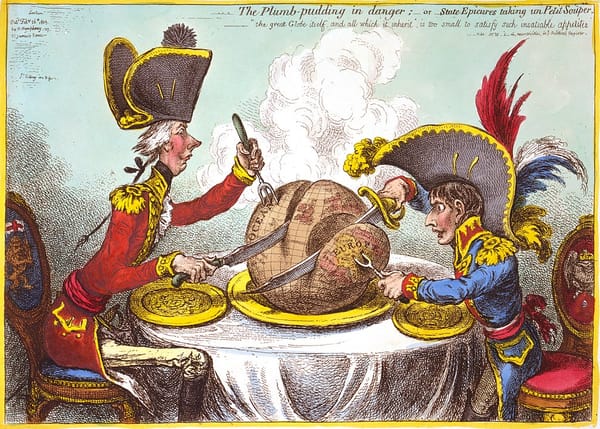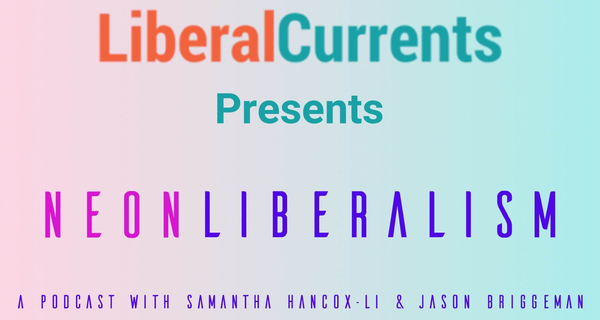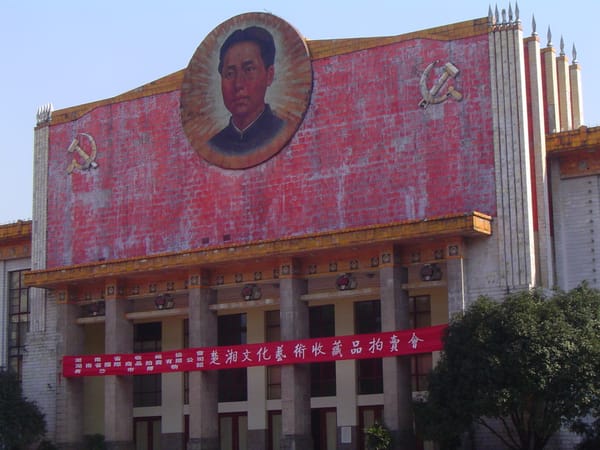Lessons for a New Cold War

I am a child of the 90s. America had emerged from the long twilight struggle of the Cold War victorious, materially and ideologically: liberal capitalism was, it was said, the end of history. As such it was hoped that free trade and free exchange would slowly see the People’s Republic of China liberalize their society and join the liberal world order as a prosperous, peaceful member. Recent events have disappointed those hopes—no one thing, but an accumulation of them: crushing Hong Kong’s democracy after promising to maintain “one country, two systems,” the ongoing genocide in Xinjiang, the ever-more-extensive apparatus of state surveillance developed to monitor and regulate their own citizens. This domestic illiberalism is only mirrored in Xi’s “Wolf Warrior” foreign policy, aimed at the conquest and subjugation of Taiwan, the ownership of the South China Sea out to the nine dash line, domination of its neighbors, and generally accumulating sufficient power to challenge American hegemony. The PRC’s years-long campaign of state-backed industrial espionage, especially aimed at military and aerospace technology, is only one disturbing manifestation of this program.
It is natural as liberals to deplore war and warmongering. But the truth is that Cold War Two is upon us whether we like it or not. Just as Vladimir Putin picked his war in Ukraine, Xi Jinping has picked his conflict with the liberal order. And as prominent conservatives begin advocating for America to abandon our allies, attack our friends, and close our borders, all in the name of beating China, we must not cede the field to these voices. Cold War Two started years ago, and it is incumbent on us to develop a liberal program for winning it. Without a liberal alternative, conservatives will use the excuse to push us towards isolationism, xenophobia, and a new Know-Nothingism.
This essay proposes a simple answer. We can win Cold War Two the same way we won Cold War One: not through violent confrontation, but by proving the superiority of the liberal system over the long run. This can be achieved by cleaving to three fundamental principles: economic growth, immigration, and national sovereignty.
Plank 1: Economic Growth
We and the Soviets spent billions on tanks, on planes, on missiles, on war and death—but in the end, Cold War One was decided by the grocery stores. In the Soviet Union they were unreliable, short on bread or meat, long on shoddy clothes and badly-fitting shoes. In America they were overflowing—with fresh fruit, refrigerated goods, the jell-o pudding pops that astounded Boris Yeltsin when he stopped at a random Randall’s in Clear Lake, Texas. And this abundance was the result of one simple factor: the American system delivered greater long-run economic growth than the Soviet system.
You might at this point interject that it’s pointless to try and compete with the People’s Republic of China on economic growth. Their economy has grown faster than five percent per year since Deng’s reforms in 1978, and it’s impossible for us to ever achieve such heights. But the truth is that history has shown, over and over, it is easy to achieve astounding rates of growth when your nation is catching up to humanity’s technological frontier. Pouring modern technology and methods into a population that mostly consists of rural subsistence farmers can of course achieve incredible growth. The factories don’t even need to be particularly efficient for huge gains to be possible. The early Soviet Union, after all, is one such example—there’s a reason that the early Cold War was dominated by fears of Soviet economic might, despite the end of the Cold War being dominated by jokes about Soviet inefficiency.
Many trends indicate that China has already begun facing severe economic headwinds, not unlike Japan in its Lost Decade. China is simultaneously hitting the demographic transition and the limits of the “developmentalist” model of state-led growth, with the real possibility that they will fall into the middle-income trap—and with a lower GDP per capita than Japan had achieved when it hit the same speed bump. It is sometimes taken for granted that Chinese growth will continue infinitely forever, and that there is no point in even trying to compete with them on this matter. It’s worth remembering that people thought the same about the Soviets, once.
So how can the United States achieve durable long-run growth and escape the spectre of “secular stagnation”? The unfortunate truth is this: secular stagnation is not some mysterious force operating from beyond human control. Secular stagnation is a self-inflicted wound. We can take the brakes off the American economy through three key policies. First, we must reform our anti-housing regulations. A thicket of red tape has prevented Americans from building housing where the jobs are. We have created an artificial scarcity of housing, one that prevents people from moving to where the jobs are, and diverts an ever-greater share of national income into rentiers’ pockets. Cutting down this thicket in just three cities would boost American GDP by 8.9%.
Second, we require permitting reform, especially for new green industries like solar and wind. Much as with housing, we have put endless red tape in the way of new industrial development, one that, as Adam Gurri says, achieves the worst of both worlds—neither effective regulation nor efficient markets. These regulations have stifled not just growth but the transition to a green economy, as local busybodies (and the oil and gas lobby) strangle the development of wind turbines, solar plants, and transmission lines.
Third, we must embrace a new Keynesianism that provides stimulus, not austerity, in response to crises. Since Reagan, America has embraced fiscal austerity and anemic monetary policy. The inadequate stimulus following the 2008 financial crisis gave us the Great Recession. Contrast that with the rapid resumption of growth after Covid—a result of large-scale government stimulus in response to crisis. Under Biden, a hot labor market has driven down unemployment to 3.4%, all while inflation has been brought under control by prudent monetary policy.
I do not know what the “refrigerated aisle” of 2100 is going to be—just as the people of 1945 could not imagine what the grocery stores of 1989 would look like. But if we can take the brakes off America, we shall continue to be the foundry where the future is forged—and at the end of Cold War Two, our broadly-shared prosperity will, once again, astound the world.
Plank 2: Immigration
Between the beginning of its construction in 1961, and its eventual destruction in 1989, more than five thousand people would flee from East to West across the Berlin Wall—and at least 140 others would die trying. There was no more visible symbol of the difference between the Soviet and the Western systems: the Soviets had to build walls to keep their people in.
Between January and March of 2023, more than four thousand Chinese citizens attempted to cross America’s southern border without authorization. Like East Germans before them—like millions of immigrants from the founding of America to today—they have come to the West seeking escape from oppression and a better life for their families. As Xi’s China turns increasingly authoritarian, more and more Chinese citizens will come to our shores fleeing stagnation and oppression at home. We should welcome them with open arms.
It is sometimes alleged that immigration must, as a matter of “simple economic logic,” be bad for incumbent residents. By increasing the supply of labor, immigrants must necessarily decrease its price—”they’re stealing our jobs!” Such “simple economic logic” tends to ignore the part where immigrants consume goods and services like everyone else—and thus, as study after empirical study confirms, do not decrease incumbents’ well-being. It is also alleged—with the racism less masked this time—that immigrants must of necessity tear apart the “social fabric” of America. It is worth in such moments recalling that twenty-eight percent of Americans are either immigrants or the immediate children of immigrants. The United States has proven world-historically good at welcoming new immigrants and integrating them into our social fabric.
And, to be blunt, we need them. Under Biden, the CHIPS Act and the Inflation Recovery Act have unleashed a new era of industrial policy—one that will require vast numbers of highly skilled workers to operate. Chip fab construction is already hitting roadblocks finding the highly specific expertise needed to set up advanced photolithography manufacturing. America is a big country, and we produce a lot of brilliant people. But it’s an even bigger world, and there’s no reason to prevent the best and brightest around the world who wish to become Americans from doing so. Immigrants consistently deliver unusually high rates of innovation and entrepreneurship—two things that will be essential to winning the twenty-first century.
Meanwhile, immigration is one area China has consistently struggled with. The PRC is hitting the demographic transition sooner than anyone expected, with the Chinese population expected to begin shrinking by 2031, if not sooner. The overhang of elderly citizens is likewise expected to exert a similar effect on their economy as it has on Japan’s, as fewer and fewer young workers begin supporting a larger and larger number of non-working retirees. And the PRC experiences near-zero immigration, with approximately 1448 naturalized citizens in the entire country as of 2010
The race of the global talent of the world is one that America can easily win—if we choose to. This will require reforming our broken immigration system. We do not need a wall. We need an Ellis Island for the twenty-first century. The guiding light of immigration policy should be to naturalize new citizens each year equal to one percent of our current population. This is not an unreasonable goal—if Canada can do it, so can we. Any foreign national who completes an advanced degree in the United States should be eligible for permanent residency. The world already comes to America to receive the best education there is—we should let them put that education to work in America afterwards! Achieving an overall one percent naturalization goal will also require streamlining the immigration process, eliminating the burdensome paperwork and pointless bureaucracy that currently clogs up our system. It will also require paths to citizenship for DREAMers and other undocumented workers. By increasing legal immigration, we will decrease illegal immigration, freeing up resources for enforcement of actual threats to national security, instead of the endless, mindless brutality of the current regime. We can prosecute smugglers and spies more easily if our resources are not consumed by policing ordinary people who are simply seeking a better life.
Plank 3: National Sovereignty
The twenty-first century began with the United States, under the leadership of George W. Bush, pursuing two great projects in regime change: to remove the Taliban from Afghanistan and Saddam from Iraq and replace each with a liberal democracy. A generation later, a million dead later, trillions of dollars later—and the Taliban still rule Afghanistan. The War in Iraq profoundly harmed America’s standing in the world, and gave cover to dictators like Vladimir Putin who thought they too should be allowed to launch wars of aggression in their near abroad.
These contemporary foreign adventures are in that respect little different from those of Cold War One. It would be hard to argue that our endless anti-Communist meddling (read: dirty wars and paramilitary murder) in Latin America produced anything like stable liberal democracies. We spent twenty years propping up a failing French colony in southeast Asia—and, fifty years later, the Communists still rule Vietnam. Our ability to forcibly intervene on other nations’ domestic politics is extremely limited.
We can contrast these failures with the war in Ukraine, in which Ukrainian resolve and Western weapons have enabled a fledgling liberal democracy to stand off the second-largest military on the planet. Our weaponry has a place—and that place is defending democracies, not propping up corrupt dictators. When the Iron Curtain came down, and democracy spread across the former Soviet bloc, it did not do so at the point of American rifles. Rather, these were nations at a turning point in their history. At that turning point they looked around to see what models of society had successfully delivered—and liberal democracy had. It may have been the force of our arms that kept Stalin’s armies at bay in 1945, but in 1989, it was the strength of our example that turned Eastern Europe democratic.
This history suggests a twofold policy. First, America must reject regime change as a goal of war. Regime change has not only failed on its own terms, but has caused tremendous damage to American diplomacy, foreign policy, and the legitimacy of the liberal international order. Second, America must commit to working within the liberal international order to defend liberal democracies. First and foremost, this means an explicit commitment to defending Taiwan in the event of an invasion by the PRC. Our strategic ambiguity regarding Taiwan may once have served a purpose, but now it only increases the risk of a military confrontation. We must state clearly what everyone already knows: Taiwan is a free, independent nation, and we will fight to ensure it stays that way.
We must make it our principle to let nations determine their own course, without fear of foreign conquest, and by our example show the world a better way forward—a shining city on a hill and a light to the world.
Featured Image is Artist Rendering of Apollo-Soyuz Test Program




